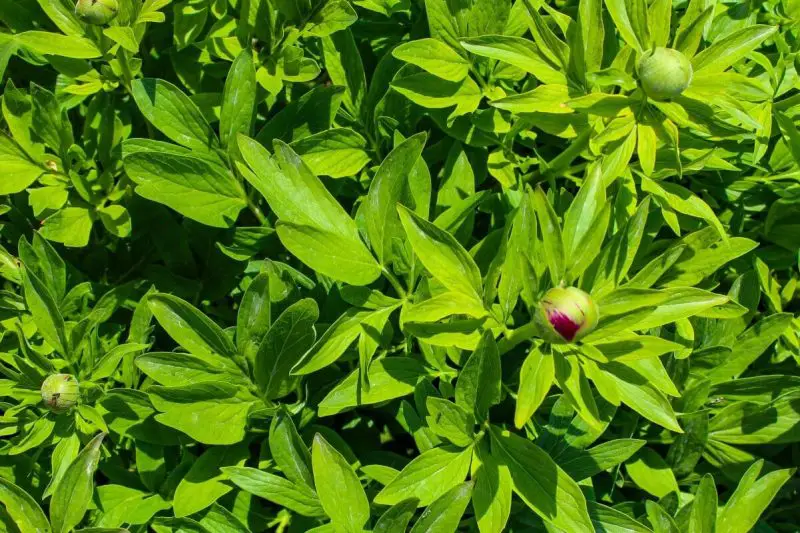Peonies are cherished garden perennials, admired for their full, fragrant flowers that last beautifully in bloom. However, it can be frustrating when these reliable flowers fail to produce blossoms, leaving gardeners puzzled and disappointed. If your peonies have plenty of healthy foliage but no flowers, there are several potential reasons behind this issue. Understanding why peonies sometimes refuse to bloom is the first step toward encouraging them to thrive.
This guide explores the most common causes of non-blooming peonies and provides practical solutions to restore their full flowering potential.
Understanding the Blooming Cycle of Peonies

Peonies have a distinct growth and blooming cycle that influences when and how they produce flowers. Most herbaceous peonies bloom in late spring to early summer, depending on the variety and local climate. Their buds form in late summer to early autumn of the previous year, which means that conditions during the prior growing season directly impact the following year’s flowers. Peonies also require a period of winter dormancy and chilling to trigger bud development, making them more suited to temperate climates.
Knowing this natural blooming cycle helps set realistic expectations. Peonies typically take two to three years to become fully established after planting, with younger plants producing fewer blooms until their root systems mature. If your peonies are relatively new additions to the garden, patience may be necessary before expecting abundant flowers.
Planting Depth and Its Impact on Blooming
How Planting Depth Affects Peony Growth
One of the most common reasons peonies fail to bloom is incorrect planting depth. Peony eyes, the small red or pink buds on the tuberous roots, need to be positioned close to the soil surface. If they are planted too deeply, the buds may fail to receive the necessary exposure to cool winter temperatures, which disrupts their blooming cycle. Conversely, if the eyes are too close to the surface, they may dry out or suffer from frost damage.
Ideally, peony eyes should be planted no more than one to two inches below the soil surface. This shallow planting allows them to experience sufficient winter chilling while still being protected from extreme weather. Gardeners who accidentally bury the roots too deeply often notice healthy foliage but no flower production, as the plant focuses on vegetative growth rather than bud formation.
Correcting Planting Depth Problems
If you suspect planting depth is the issue, the solution involves careful lifting and replanting during the plant’s dormant season. Early autumn is the best time to dig up and reposition peonies, as they have completed their growing cycle and are preparing for dormancy. When replanting, gently loosen the surrounding soil, place the root clump at the appropriate depth, and ensure the soil is well-draining. The following spring, you may still see limited blooms as the plant adjusts, but improved flowering should occur in subsequent seasons.
Sunlight Requirements for Healthy Blooms
The Role of Sunlight in Flower Production
Peonies are sun-loving perennials that require at least six to eight hours of direct sunlight daily to bloom properly. Insufficient sunlight can result in abundant foliage but few or no flowers, as the plant does not receive enough energy to produce buds. In shady locations, peonies may grow tall and spindly, diverting energy into leaf production rather than flowering.
Gardeners often encounter this problem when peonies are planted near large trees, fences, or buildings that cast shadows throughout the day. While peonies can tolerate partial shade, especially in hot climates, full sun exposure remains ideal for optimal bloom development.
Improving Sunlight Conditions
If your peonies are shaded, consider relocating them to a sunnier area during the dormant season. Another option is to trim nearby shrubs or branches to allow more light penetration. Keep in mind that peonies are sensitive to being disturbed, so they may take a season or two to adjust after being transplanted. However, once established in a bright, sunlit location, they will reward you with stronger, more abundant blooms.
Nutrient Imbalances and Fertilization Issues
How Soil Nutrition Influences Blooming
Peonies thrive in moderately fertile soil, but incorrect fertilization can significantly affect their flowering ability. Excessive nitrogen, often from high-nitrogen lawn fertilizers, promotes lush green foliage at the expense of flowers. Without sufficient phosphorus and potassium, bud development may be weak or entirely absent.
Healthy peonies prefer a balanced or slightly phosphorus-rich fertilizer to encourage strong root growth and bud formation. Overly rich or poorly drained soil can also stress the roots, further limiting flower production.
Restoring Proper Soil Balance
To improve nutrient conditions, test the soil to determine its pH and nutrient levels. Peonies grow best in slightly acidic to neutral soil with a pH between 6.5 and 7.0. Adding compost or aged manure in moderation can improve soil structure, but avoid excessive feeding with nitrogen-heavy fertilizers. In early spring, applying a slow-release fertilizer with balanced nutrients or one formulated for flowering perennials can help support healthy bloom production.
Age and Maturity of the Peony Plant
When Peonies Are Too Young to Bloom
Newly planted peonies often take time to establish before producing full blooms. In their first year, energy is primarily directed toward root development rather than flower production. Even in their second or third growing season, peonies may produce only a few buds as they continue to mature.
Patience is essential with young plants. Rushing the process with heavy fertilization or frequent transplanting can stress the roots and delay blooming further.
Dealing With Older, Overgrown Peonies
Mature peonies, especially those that have not been divided for decades, can also experience reduced flowering. Over time, the center of the clump may become woody and less productive, with flowers only forming around the outer edges. Dividing and rejuvenating old peonies every ten to fifteen years can reinvigorate their blooming capacity. This process is best done in early autumn, giving the plant time to settle before winter.
Winter Chilling and Climate Considerations
Why Cold Dormancy Matters for Blooming
Peonies require a period of cold dormancy to set buds for the following season. This chilling period mimics their natural habitat in temperate regions, signaling the plant to form flower buds during the previous growing season. In warmer climates where winter temperatures remain mild, peonies may fail to bloom due to insufficient chilling hours.
Gardeners in regions with hot winters may struggle with consistent blooming, as some peony varieties are more heat-sensitive than others.
Encouraging Blooms in Warmer Climates
If you live in a warm region, selecting peony varieties bred for mild winters can increase your chances of success. Southern gardeners often have better luck with early-blooming herbaceous peonies or tree peonies that tolerate warmer conditions. Additionally, mulching with organic material during winter can help retain cooler soil temperatures, simulating a more natural dormancy period.
Bud Damage and Environmental Stress
Frost and Weather-Related Problems
Peony buds are sensitive to late spring frosts, heavy rainfall, and strong winds. Cold snaps after buds have formed can cause them to wilt or drop before opening. Excessive moisture, particularly in poorly drained soil, can lead to root rot and weakened plant health, reducing flowering potential.
Gardeners should also watch for extreme heat waves, which can dry out developing buds and cause them to abort before fully forming.
Protecting Peonies from Environmental Stress
Planting peonies in well-drained soil and avoiding overly wet locations can help prevent root-related problems. During periods of frost, covering plants with lightweight fabric can protect delicate buds. In areas prone to heavy rain or wind, staking the stems can prevent mechanical damage to developing buds, ensuring they remain intact until blooming.
Pests, Diseases, and Their Effect on Blooming
Common Peony Problems That Hinder Flowers
Peonies are generally hardy, but certain pests and diseases can interfere with flowering. Botrytis blight, a fungal disease, can infect buds and cause them to turn brown and fail to open. Powdery mildew and root rot also weaken the plant, indirectly reducing bloom production.
While ants on peony buds are often harmless, other pests such as thrips can damage the petals before they open, leading to distorted or aborted flowers.
Maintaining Healthy, Disease-Free Plants
To prevent disease, provide adequate air circulation around the plants by spacing them appropriately and removing dead foliage at the end of the growing season. Watering at the base rather than overhead reduces the risk of fungal infections. If fungal problems persist, applying an appropriate fungicide early in the season can help protect buds from infection.
What You Can Do to Encourage Peonies to Bloom
Creating the Right Growing Conditions
Restoring your peonies to full bloom potential begins with evaluating their growing conditions. Ensure they receive adequate sunlight, are planted at the correct depth, and grow in well-draining, nutrient-balanced soil. If necessary, adjust fertilization practices to focus on flower-promoting nutrients rather than excessive nitrogen.
Regularly inspect for signs of pests or disease, and maintain good garden hygiene to keep the plants healthy. In areas with warm winters, consider selecting heat-tolerant varieties or providing additional cooling measures during dormancy.
By addressing these factors and giving your peonies time to adjust, you can look forward to vibrant, lush blooms season after season.
FAQs
How long do peonies take to bloom after planting?
Peonies usually take two to three years to produce full blooms after planting. During the first year, they focus primarily on root development, with limited flower production.
Can I move my peonies if they are not blooming?
Yes, but transplanting should be done in early autumn when the plant is dormant. Replanting at the proper depth in a sunny location can improve flowering in future seasons.
Should I cut back peonies if they do not bloom?
Yes, cutting back foliage in late autumn helps prevent disease and encourages healthy growth the following spring, even if your peonies did not flower that year.






